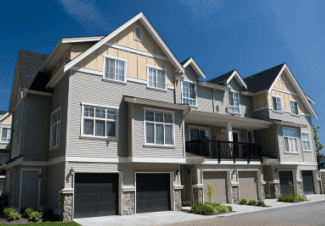Market to market, COVID-19 has had a variety of effects on multifamily around the nation

Brian Mond, director at Chicago’s Essex Realty Group, said apartment buildings will in the long run remain “the sweetheart asset,” and that is most notably reflected in the Midwest and Southeast. Moody’s Analytics listed the top-performing markets, in order, as Lexington, Kentucky; Knoxville, Tennessee; Phoenix; Nashville and Minneapolis, noting that all have seen rent growth of at least 3.7 percent this year, with Lexington topping out at 5.9 percent. Those trends contrasted greatly with those seen in places like San Francisco, Miami, Palm Beach and areas of the Northeast, like Westchester, New York and Fairfield County, Connecticut.
Shuvam Bhaumik, managing partner for Boston’s CI Holdings Group, recently explained that middle-market multifamily properties have fared well throughout the country, but they had shown particular strength in Chicago—notably the Windy City’s North and South Sides, as well as some of its more popular suburbs. Coastal investors, he added, had taken note.
“The more affordable housing market is going to be the blue-chip investment in the real estate market in general,” Bhaumik said. “It’s like in the past when people wanted to buy IBM because we were always going to need computers; that’s what affordable housing is today.”
Some news outlets have noted that over 18,000 units were under construction in Chicago as of June, and that construction in other Midwestern sites—the Twin Cities, Kansas City, Columbus and Detroit—was also holding steady, despite COVID-19.
Even places like Southern California and Tucson have shown resilience. Mike Hanassab, a Los Angeles-based broker, recently explained that he is among those “still getting pre-COVID values for a lot of properties, depending on the real estate and operations.” And in Tucson demand remains “at an all-time high” according to multifamily specialist Allen Mendelsberg. Because of that, another 1,063 rental units are expected to come online by the end of the year, 50 more than in 2019.
The bottom line is that while the industry has taken a hit, it was neither as bad nor as prolonged as was feared. As Essex Realty Group managing director Steve Livaditis explained, “The big fear, nightmare really, of a big collapse didn’t happen. Two or three months ago, (any potential issues) eased up, and today it’s a complete 180 from where we were six months ago. We thought all this was going to be much more challenging.”
When the pandemic first hit, it was unclear exactly how great its impact on the multifamily space might be. Dr. Victor Calanog, head of CRE Economics for Moody’s Analytics, said in March that “major historical idiosyncratic shocks” have in the past affected different areas in different ways. One example he offered was that of a 1994 earthquake that struck Los Angeles. Because apartment stock was suddenly in short supply, he said, vacancies were fewer and rents higher.
That contrasts markedly with the impact Hurricane Katrina made on New Orleans in 2005. Calanog noted that all of the rental properties in the city’s ravaged Ninth Ward were knocked offline, causing residents to move as far away as Houston. Many have yet to return.
As for 9/11, there was some expectation that the terrorist attacks would cause numerous renters to flee New York City and Washington, D.C., the two cities that had been targeted. But Calanog said that did not happen.
And what of COVID?
“The effect will likely be concentrated in the qualitative nature of demand,” Calanog said, adding that he expected there would be a trend toward more building and renting in the suburbs (a belief that others in the industry share).
Calanog added that he expected common areas in apartment buildings to be repurposed, and that too has become commonplace. Maybe, he suggested, storage units will take on added importance in the multifamily properties of the future. Certainly, he believes, the co-living trend, which never quite took off, will go by the wayside.
The bottom line is that the multifamily housing space has been forced to adapt, as have many industries. Yes, there have been unprecedented challenges, and there figure to be new ones in the months ahead. But this sector appears to be as resilient as any.
Source: rejournals.com















 Accessibility
Accessibility